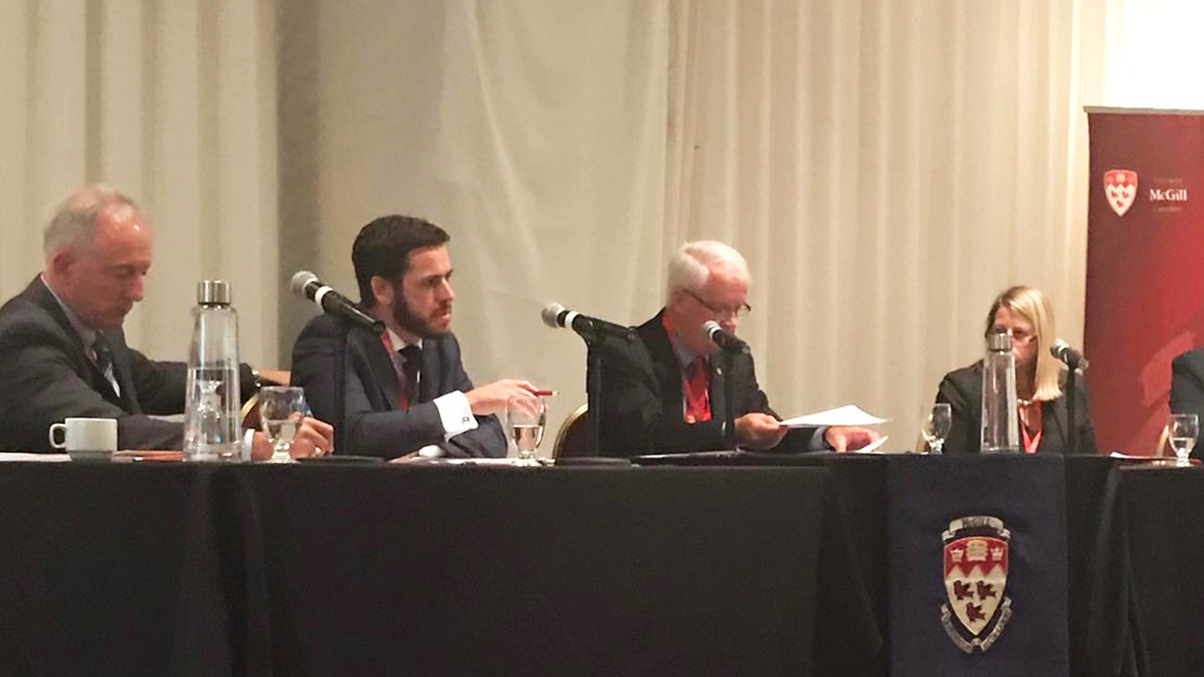For those familiar with Montreal Convention litigation, globally reported cases on the interpretation of “accident” under Article 17(1) have been limited over recent years. Pursuing a claim to trial that will turn on the interpretation of a single word carries risks for both claimants and defendants.
The Montreal Convention is a unique piece of legislation for the purposes of determining the claims of those injured in aviation related claims. Through the Convention, aviation law precedents break the conventional mould of simply applying home jurisdiction case law. Courts in all jurisdictions routinely consider case law from jurisdictions other than their own in an effort to ensure a unified approach when interpreting issues relating to claims under the Convention.
Consistency among the decision makers is essential. Both the House of Lords and the US Supreme Court have made the point, that where multinational treaties are being considered, regard should be had to how other state parties have interpreted their content.
In this article, originally published in the American Association for Justice (AAJ) Aviation Law Section Community Blog (paywall), Rebecca Smith examines the Montreal Convention definition of “accident” in light of the more recent decision in Labbadia v. Alitalia [2019].
Rebecca’s review the different conclusions in GN v. ZU [2019], and the first recent application of GN v. ZU in YL v. Altenrhein Luftfahrt GmbH, handed down in May 2021, can be found here.
Accidents under Article 17(1)
Aviation personal injury claims fail at the first hurdle if they are unable to satisfy the criteria of Article 17(1) which provides: “The carrier is liable for damage sustained in case of death or bodily injury of a passenger upon condition only that the accident which caused the death or injury took place on board the aircraft or in the course of any of the operations of embarking or disembarking”.
Article 17(1) requires an “accident” to take place and an understanding as to what the qualifying requirements are. Taken in isolation, the word “accident” is a nebulous one. Lawyers frequently lean on case law to inform their views on niche points of law, but the decisions are not always consistent across different jurisdictions.
Prior to the 2019 decision in GN v. ZU Case C-532/18, there had been no cases focusing on the interpretation of the word “accident” by the Court of Justice of the European Union (CJEU). Common sense dictates that interpreting such a simple word would be an easy task. This was the view expressed by Kay LJ in Deep Vein Thrombosis and Air Travel Group Litigation [2005], who commented that when Article 17 was drafted, he had little doubt that those who drafted it thought that “accident” was a relatively straightforward concept that would be understood. In the US, the meaning of “accident” has been examined in two seminal decisions. The older and more important case is Air France v. Saks [1985].
The opinion of Justin O’Connor for the Supreme Court, has been widely accepted as the correct interpretation of “accident”, defined as “an unexpected or unusual event or happening that is external to the passenger”. The pertinent questions for the court are:
- Was there an event?
- If so, was the event unusual, unexpected, or untoward from the claimant’s perspective?
- Was the event external to the claimant?
There is a hidden danger here. Subsequent cases following this decision have tended to base their analysis on the Air France interpretation rather than Article 17 itself. There is a risk of inconsistency if interpretation does not mirror the application of Article 17. In any event, the three-step approach above utilised in Air France informed the court’s analysis in Labbadia v. Alitalia [2019].
Labbadia v. Alitalia [2019]
In my case of Labbadia v. Alitalia [2019], the High Court had to determine whether the circumstances of the Claimant’s injury when he fell on steps covered in ice and snow as he disembarked constituted an “accident” within the meaning of Article 17(1) of the Montreal Convention. The claimant had disembarked from the rear of the aircraft where the external stairs offered no canopy whereas passengers leaving via the forward exit did have such protection. The claimant contended at trial that the external stairs had not been cleared of snow and ice.
The defendant’s central argument was that the accident was one of pure omission, not an event, and the failure to clear the stairs of snow and ice could not constitute an “accident” within the definition of the Convention.
The key aspect of this decision was the judge’s emphasis that the accident had arisen as a result of the positive decision taken by the airline and its agents to use uncovered stairs rather than a failure (or omission) to warn passengers as to its dangerous condition. This decision by the crew was contrary to the airline’s operating practices. The judgment contrasts with the ruling regarding omissions to act in Olympic Airways v. Husain, where an omission was found to be an “accident”. In Olympic Airways, a carrier’s unusual and unexpected refusal to assist a passenger met the criteria of an “accident” under the Montreal Convention. The carrier had refused to move a passenger who suffered from asthma away from smokers. It was held that the carrier’s inaction was a link in the chain of causation resulting in an aggravation of a pre-existing medical condition by exposure to what should be a normal condition in the aircraft cabin.
A pivotal aspect of the case in Labbadia was the local airport’s operating manual policy which required the stairs to be free of contamination and to be used “where possible” in poor weather conditions. Whilst the judge found that there was nothing “unusual” or “unexpected” regarding the weather conditions themselves, she did find that the use of stairs without a canopy was. The judge was satisfied that the definition of an event had been met as the event in question arose from a series of positive acts by the airport and the airline in deciding to use stairs without a canopy in spite of the weather and thereafter positively deciding not to clear the steps before fixing them to the aircraft.
The judge went on to find that the event was “unusual” and “external” to the claimant because the use of stairs, without a canopy in adverse weather conditions, did not comply with the airport’s safety protocols and therefore was not a part of the expected operations of the aircraft.
This line of analysis is an important clarification for defendant airlines and their insurers. Whilst adverse weather conditions or contamination on stairs is not itself an “event” or an “accident”, a failure to follow airline operating manuals and/or practice are likely to have implications for any successful defence.
Differing approaches?
While there would appear to be some tension between the Husain and Labbadia approaches to omissions or inactions (as they are termed in Husain), one may consider this purely a question of characterisation. The Husain omission could be re-characterised as a positive decision not to move Mr. Husain, in breach of industry standards and Olympic’s operations manual. The court in Husain may have recognised this when they held that there “is often no distinction between action and inaction on the issue of ultimate liability”.
The Australian courts have tended to approach the characterisation of omissions in the same way as the English court. In Povey v. Qantas Airways, Judge McHugh disagreed with the approach taken by the US Supreme Court in Saks (and Husain), holding:
“A bare omission, i.e. an absence of action, does not fit under the umbrella of ‘accident’. The causal element of an ‘accident’ generally requires a happening or occurrence. In my opinion, the Supreme Court was largely correct in Saks in recognising that in the context of Art 17 the concept of ‘accident’ requires an external causative event. In some circumstances, however, an omission may constitute an event or occurrence for the purpose of Art 17, as when there is a failure to carry out a duty, practice or expectation. In Olympic Airways, the Supreme Court held that the refusal to shift the passenger contrary to industry practice and company policy was an ‘accident’. An omission may also constitute an ‘accident’ when it is part of or associated with an action or statement. Thus, omitting to keep a proper lookout in the course of pushing a food trolley or refusing to do something as in Olympic Airways may be an element in an ‘accident’”.
This approach follows the English court’s approach of characterising an omission as a positive action in breach of an airline’s operating manual or industry standards.
In the Canadian decision of Ben-Tovim v. British Airways [2006] the court concluded that inaction is a non-event rather than an Article 17 “accident”. For claimant practitioners, it is important to consider this characterisation in the way a claim is presented. While presenting the claim on the basis of an omission may be successful in the United States, such a characterisation is unlikely to survive in courts outside the United States. That same omission could likely be re-characterised as a positive act in breach of an industry practice or an airline’s operating manual and claimant practitioners should seek to approach the failure in this light.
You can find further information regarding our expertise, experience and team on our Aviation pages.
If you require assistance from our team, please contact us.
Subscribe – In order to receive our news straight to your inbox, subscribe here. Our newsletters are sent no more than once a month.





